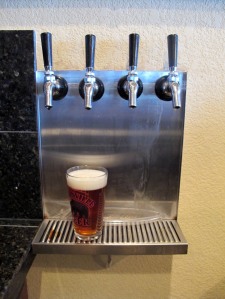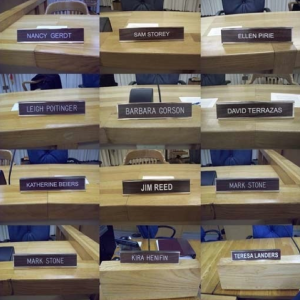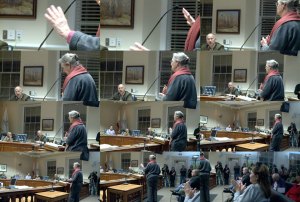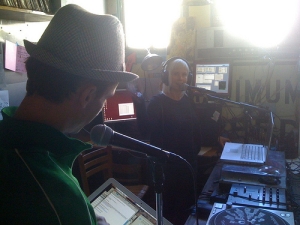“Instructions for Eating” is a monthly column edited by Tracy Candido about food as a medium and eating as a social practice. Invited artists present recipes, preparation instructions, directions for hunting and gathering, lists of ingredients, etc. for public consumption. These experimental essays function as a site of learning and action: readers are encouraged to perform the instructions laid out before them. Each invited artist is asked to propose/suggest two other artists who would be well suited for the column. This creates a participant/artist driven effort. The following entry is from Eric Steen.
Many galleries think about using local foods and supporting the local community when it comes to serving food in the gallery. During openings, fundraisers, and special events food is often seen as an expanded type of art – care is taken to make sure that the food is prepared well, raised humanely, and free of harmful chemicals; local farmers and artists are invited into the gallery to give presentations on the food and to show how eating can be a relational activity. When it comes to the drinks provided at these events however, many galleries skimp. Galleries that I visit, and galleries that I have worked with, often receive beer donations and are able to offer beer for free to visitors. The problem is that this beer is often a product of huge companies that promote their beer with misogynist and objectifying advertisements. Additionally, most of the donated beer is industrial lager, where low quality ingredients and mechanized labor produce a drink that is stripped of flavor and has little resemblance to beer at all. These companies include Budweiser, Miller, Coors, Stella Artois, Heineken, and others.*
There is, however, a growing movement in beer; a movement that has been hindered by neo-prohibitionist ideologies that associate beer with drunkenness and all that is wrong in the world (which isn’t helped by the marketing work of the large brewing companie)s. In this movement, beer is seen not as an agent for getting drunk, but as a drink that has more complexity than wine and coffee; a drink that encourages thoughtful analysis, that familiarizes people with local agriculture and food politics, and is recognized as the world’s oldest alcoholic beverage. Patrick McGovern, a lead archaeologist specialized in the field of alcoholic beverages, suggests that beer is a major reason that groups of people began to form into agricultural communities, providing an easier way to have large and consistent quantities of grain available. Whether or not this is a myth, I have become interested in the aesthetics of beer and brewing. As an artist and homebrewer, my work is inspired by the idea that beer is the people’s drink – that it brings people together, loosens barriers between people, and that these social elements are integrated into the entire idea, production, and consumption of the beverage. Beer is a social lubricant (as Tom Marioni stated), and it is a social glue. Drinking good beer, to me, is a form of activism as it brings people together, inspires local economy, develops a sense of landfulness, and is known for shaping how people think about where their food comes from. Beer is an agent for social change. This fascinates me and is a major topic of exploration in my work. The pint is a center for relational activity; sharing a pitcher is an activity that, by the end of the pitcher, will likely have inspired warming conversation and bonded people together. In my opinion, drinking together and community is at the center of well-made beer.
If it is a part of the gallery’s general philosophy to support local food groups and organizations and to provide visitors with high quality food experience then it is necessary to put that same effort into the drink selection as well. In this post I will provide three general ideas for incorporating locally brewed beer into aspects of the gallery, showcasing it as a type of art. For those who are interested in these ideas, I have included a few broad but practical tips as well as some final thoughts on working with brewers.
 Continue reading →
Continue reading →






